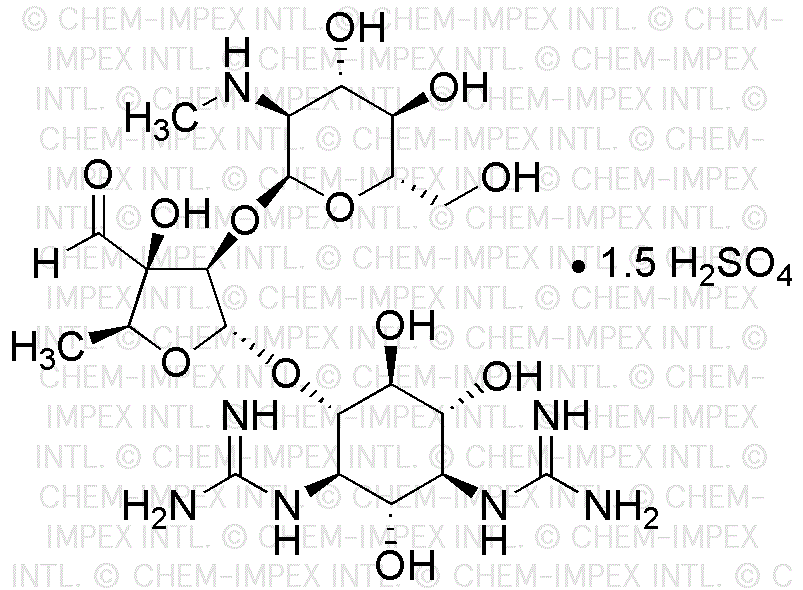Streptomycin sulfate is widely utilized in research focused on:
- Antibiotic Treatment: It is primarily used to treat tuberculosis and other bacterial infections, making it essential in the field of infectious disease management.
- Veterinary Medicine: This compound is often administered to livestock to prevent and treat bacterial infections, ensuring animal health and productivity.
- Laboratory Research: Researchers use streptomycin sulfate in microbiology to study bacterial resistance and the efficacy of antibiotics, aiding in the development of new treatments.
- Cell Culture Applications: It is employed in cell culture media to prevent bacterial contamination, which is crucial for obtaining accurate experimental results.
- Pharmaceutical Development: The compound is involved in the formulation of various drugs, particularly those targeting gram-negative bacterial infections, providing a critical tool for pharmaceutical innovation.
General Information
Properties
Safety and Regulations
Applications
Streptomycin sulfate is widely utilized in research focused on:
- Antibiotic Treatment: It is primarily used to treat tuberculosis and other bacterial infections, making it essential in the field of infectious disease management.
- Veterinary Medicine: This compound is often administered to livestock to prevent and treat bacterial infections, ensuring animal health and productivity.
- Laboratory Research: Researchers use streptomycin sulfate in microbiology to study bacterial resistance and the efficacy of antibiotics, aiding in the development of new treatments.
- Cell Culture Applications: It is employed in cell culture media to prevent bacterial contamination, which is crucial for obtaining accurate experimental results.
- Pharmaceutical Development: The compound is involved in the formulation of various drugs, particularly those targeting gram-negative bacterial infections, providing a critical tool for pharmaceutical innovation.
Documents
Safety Data Sheets (SDS)
The SDS provides comprehensive safety information on handling, storage, and disposal of the product.
Product Specification (PS)
The PS provides a comprehensive breakdown of the product’s properties, including chemical composition, physical state, purity, and storage requirements. It also details acceptable quality ranges and the product's intended applications.
Certificates of Analysis (COA)
Search for Certificates of Analysis (COA) by entering the products Lot Number. Lot and Batch Numbers can be found on a product’s label following the words ‘Lot’ or ‘Batch’.
*Catalog Number
*Lot Number
Certificates Of Origin (COO)
This COO confirms the country where the product was manufactured, and also details the materials and components used in it and whether it is derived from natural, synthetic, or other specific sources. This certificate may be required for customs, trade, and regulatory compliance.
*Catalog Number
*Lot Number
Safety Data Sheets (SDS)
The SDS provides comprehensive safety information on handling, storage, and disposal of the product.
DownloadProduct Specification (PS)
The PS provides a comprehensive breakdown of the product’s properties, including chemical composition, physical state, purity, and storage requirements. It also details acceptable quality ranges and the product's intended applications.
DownloadCertificates of Analysis (COA)
Search for Certificates of Analysis (COA) by entering the products Lot Number. Lot and Batch Numbers can be found on a product’s label following the words ‘Lot’ or ‘Batch’.
*Catalog Number
*Lot Number
Certificates Of Origin (COO)
This COO confirms the country where the product was manufactured, and also details the materials and components used in it and whether it is derived from natural, synthetic, or other specific sources. This certificate may be required for customs, trade, and regulatory compliance.


